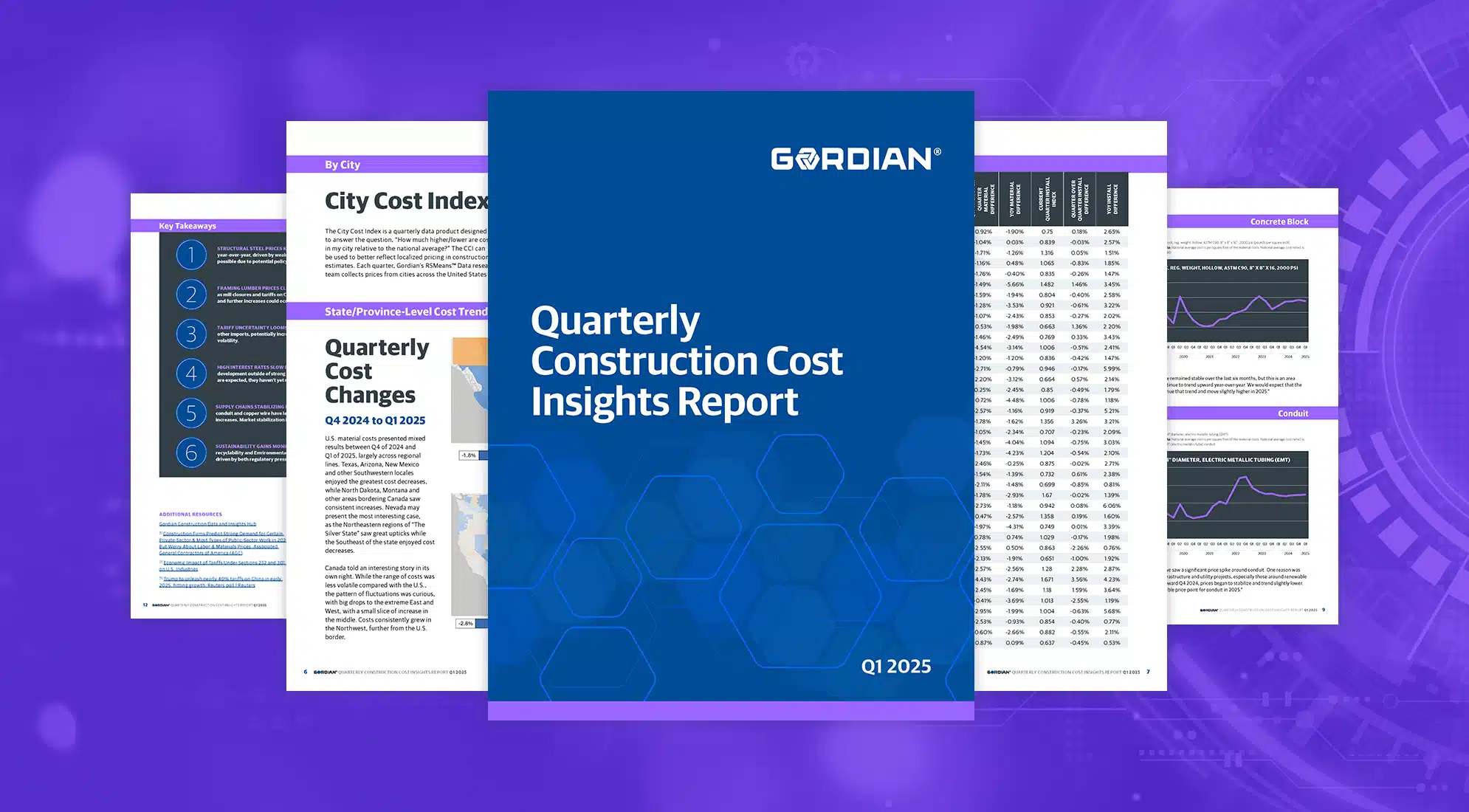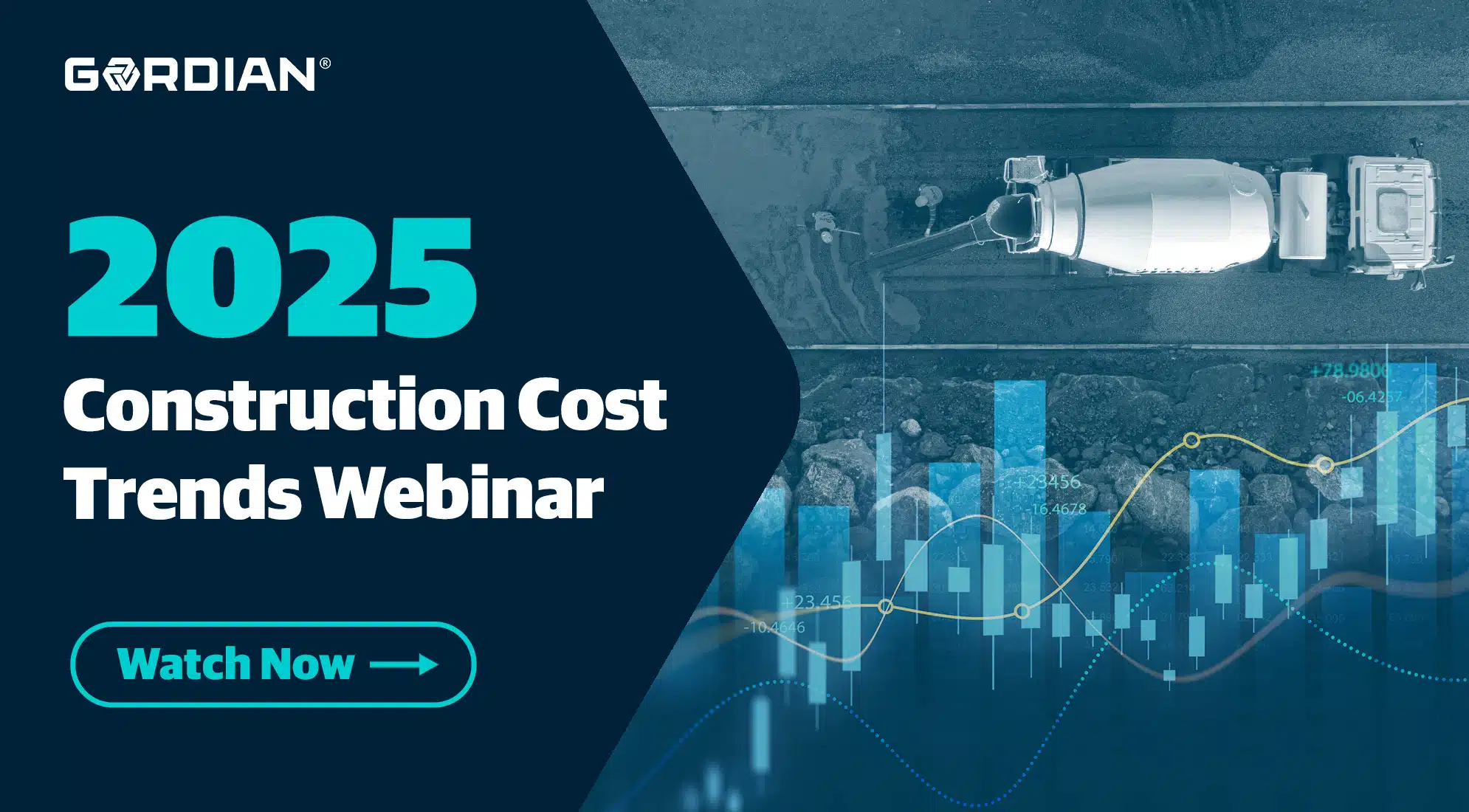Key Points:
- Material Prices Remain Volatile Amid Tariff Uncertainty: The report emphasizes that construction material costs—especially for steel, aluminum, and lumber—are being significantly influenced by potential new tariffs. These tariffs create ripple effects throughout the supply chain, leading to unpredictable price increases and sourcing challenges.
- Labor Shortages and Regulatory Shifts Add Pressure: Persistent labor shortages and evolving regulations continue to challenge the construction industry. Firms must adapt to these constraints while managing rising costs and maintaining project timelines, making workforce planning and compliance more critical than ever.
- Strategic Cost Management Is Crucial in 2025: With fluctuating interest rates and shifting demand, construction firms are urged to adopt data-driven strategies to manage costs. Gordian’s RSMeans™ Data and expert insights help stakeholders forecast trends, optimize procurement, and navigate the complex economic landscape.
Every quarter, Gordian lends its expertise to the Construction Cost Insights Report. Produced in partnership with Building Design+Construction, the report features market analysis from industry leaders based on their experiences, observations and Gordian’s RSMeans™ Data construction cost database. The industry standard for cost accuracy, RSMeans Data contains over 92,000 unit line items comprised of material, labor and equipment prices localized to 970+ locations. Available digitally and in print, this data is backed by more than 30,000 hours of research every year.
We recently published the latest Construction Cost Insights Report, covering Q1 of 2025. Here are some highlights from the most recent report, plus trends our experts are keeping tabs on early in the year.
Uncertainty Pervades the U.S. Construction Market
There’s no dancing around it: The entire construction world is holding its breath to see how new federal government policies will impact the industry. As Adam Raimond, Gordian Program Manager for Construction Indices, summed up the situation, “With a new presidential administration coming to power this quarter, all eyes will be on the first actions the administration takes.”
Trump Administration policies are expected to have profound implications for both the construction material and labor markets. Let’s first consider the potential impacts of proposed tariffs on material costs. Several contributors to the Q1 2025 Construction Cost Insights Report note that tariffs, particularly those on imported steel, aluminum and lumber, will increase construction costs. However, trade restrictions are hardly the only policy industry leaders are watching.
According to Rice University’s Baker Institute for Public Policy, approximately 25% of the construction labor force is foreign-born. Many of these workers are undocumented, and trepidation exists about how stricter immigration enforcement will impact an industry already hampered by a labor shortage.
Between expected tariffs and a rapidly moving immigration crackdown, the only certainty in the construction industry is that nothing is certain.
Read all the analysis from Gordian and other construction industry insiders in the Q1 2025 Construction Cost Insights Report.
A Pair of Wild Year-Over-Year Cost Swings
Structural steel and framing lumber are two of the most popular materials in the construction industry. Looking back over the last year, they were also two of the most volatile.
Steel costs dropped 16% from Q1 2024 to today, due in large part to a combination of anemic demand and supply chain constraints. While prices have flattened out since Q4 of 2024, trade policy shifts could result in another spike.
On the other end of the construction cost spectrum, we have lumber. Prices leaped 17% from this time last year, following production cutbacks in Canada and the U.S. While prices remain below their record highs of 2021 and 2022, increased tariffs continue to exert upward pressure on lumber costs.
Learn more about 2025 construction cost trends and hear a retrospective on the pandemic’s long-term impact on the industry in this on demand webinar.
Dropping Interest Rates
Let’s end on a high note. Construction financing is becoming more affordable following the Federal Reserve’s 0.5% interest rate reduction in late 2024 and additional cuts are expected this year. Falling borrowing costs should result in increased demand for construction, and industry experts anticipate a wave of infrastructure improvements and the development of manufacturing facilities and data centers.
An Uneasy Beginning to 2025
No one is quite sure what the rest of 2025 has in store for the construction industry. A lot of what happens in the U.S. market depends on how American trade partners respond to tariffs and the scope and severity of the new administration’s immigration policies. We’ll see if that uncertainty leads to a conservative approach, if the lure of lower interest rates sets off a building boom, or if something wholly unexpected unfolds. No matter what direction the industry takes place, we’ll be there with the cost data and analysis you need to succeed.







